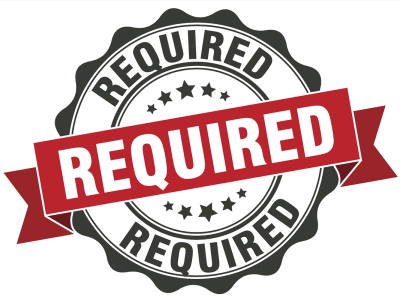Recent updates to Sentinel Event 57 and the survey process for the leadership session merit your attention. A recent Perspectives discusses important changes in the leadership session effective June 2018.
Sentinel Event 57 Leadership Session
That’s not a lot of notice for hospitals. But, for those of you who read our March 2017 newsletter, we discussed the future implications. And, we predicted this change was on the horizon. And for CAS consulting clients who use our 2018 Leadership System Tracer tool, you should be well versed in this new content.
New Joint Commission Requirements
Effective immediately, TJC requires that you include your most recent safety culture survey results with your day one documents. In fact, surveyors may want to review this document before the opening conference. So, prepare to have that information available immediately upon their arrival.
In addition, surveyors may ask for audiovisual arrangements. They want to show the Joint Commission’s video entitled: “Leading the Way to Zero.” Never the less, if audiovisual isn’t available, surveyors will show it on their tablets.
Culture Of Safety Survey
The Joint Commission will evaluate your processes and results relative to the culture of safety survey. They will explore three specific leadership standards and six specific elements of performance.
The Joint Commission identified questions about the culture of safety. They will direct these questions to leaders and staff. The ideal responses to these questions are, “yes we do,”, “yes we have” and “yes, here is what we did.”
Here are the type of issues surveyors may ask leaders about and things to consider:
- How do you assess the culture of safety and what tool do you use?
Discussing employee engagement and the percent response rate is the most frequent mistake we hear to this question. An engagement survey can integrate the culture of safety. But, it is better to use the stand-alone AHRQ survey to assess the culture.
- Do you include cultural improvement goals for the leaders or middle management?
- Is the board involved in setting expectations or improving the safety culture?
- Do you use internal or external benchmarks?
This is a good opportunity to discuss your own improvements over time or in subsequent surveys. Also, you can make comparisons to other organizations using the same tool.
- What quality improvement projects have you conducted to improve your scores on the culture of safety survey?
- Do you have a uniform code of conduct that you use for behavioral issues for all physicians and staff? Are the disciplinary procedures fair and transparent?
- What process do you have for reporting near miss errors or close calls that did not reach the patient?
- In the event of a harm how do you determine if it is a blameless error or a blame worthy error?
Talk The Talk – Walk The Walk
It’s essential that leadership describes what they have done. Talk the talk, so to speak. But further, the Joint Commission will ask staff what they have seen done, the walk the walk part of the process. Moreover, the staff directed questions may include:
- Have you ever completed a culture of safety survey? Have you seen the results? Does your supervisor discuss the results with you?
- Does your hospital have a formal mechanism for reporting intimidating behavior? Would you feel comfortable reporting such behavior?
- When an error occurs, do you have confidence that your leadership will take an appropriate look at how the system or process is accountable vs an individual?
- What process do you have for reporting close calls?
- Does leadership conduct root cause analysis of any close calls reported?
We believe these changes announced by TJC could be significant. The leadership session is something TJC has tried to improve over many years. And, they noticed a lack of scoring on the three standards and six EP’s discussed in this article.
During consultation visits, we often note a lack of readiness to discuss the culture of safety results. We also observe a lack of awareness at the staff level. So this may take some effort to be prepared.


 Deemed Status Removal
Deemed Status Removal
Leave a Reply